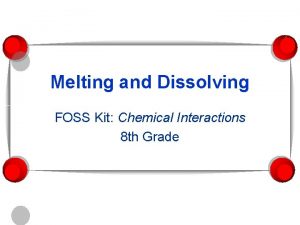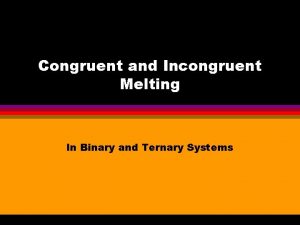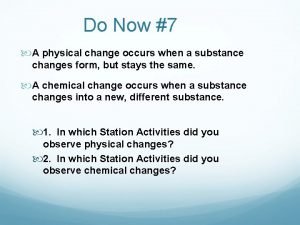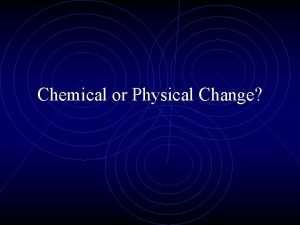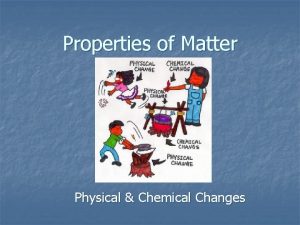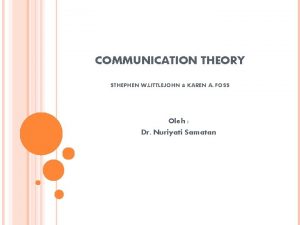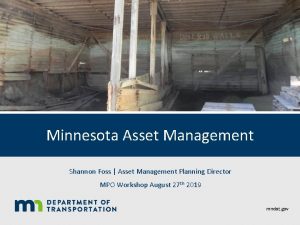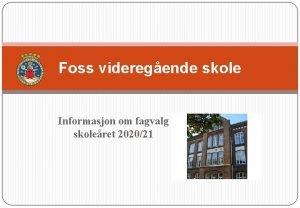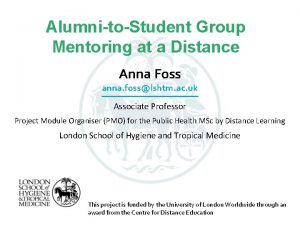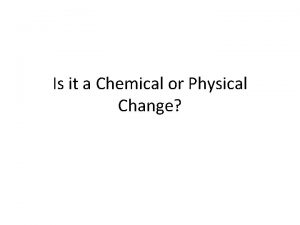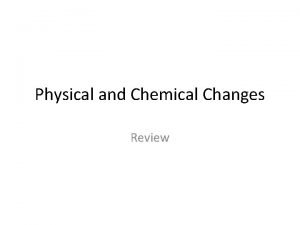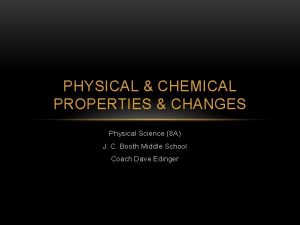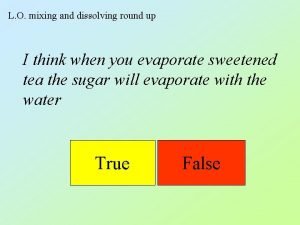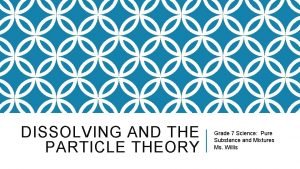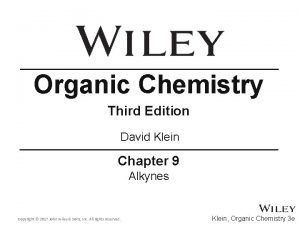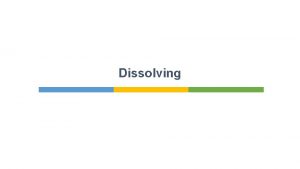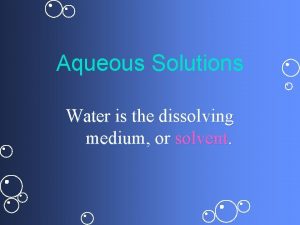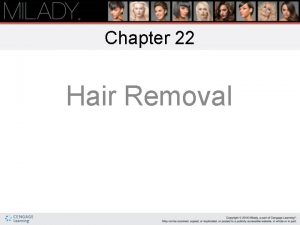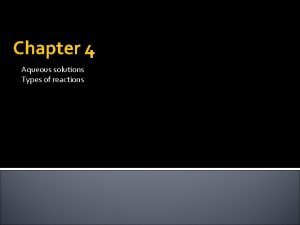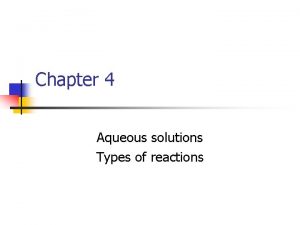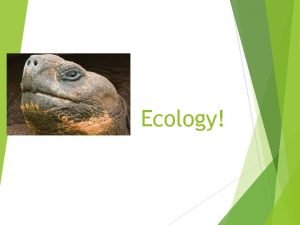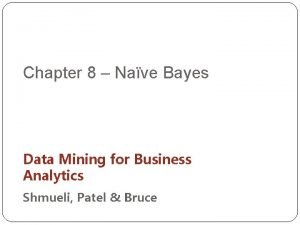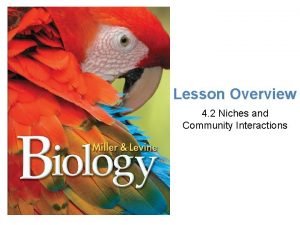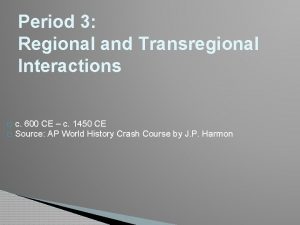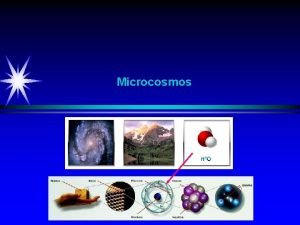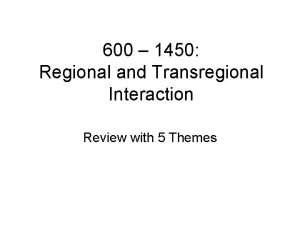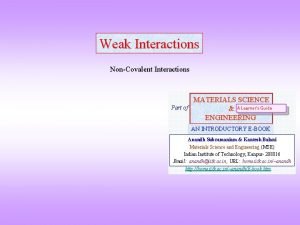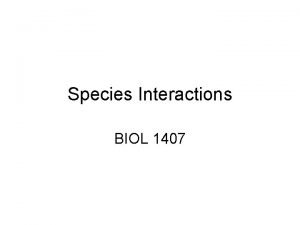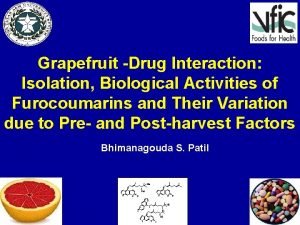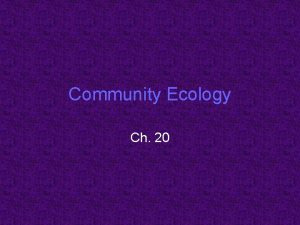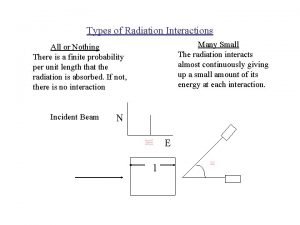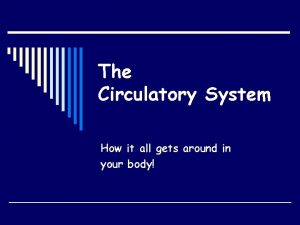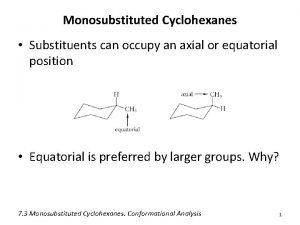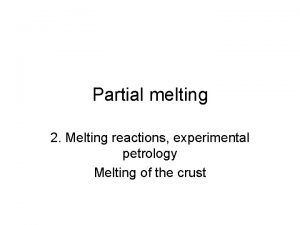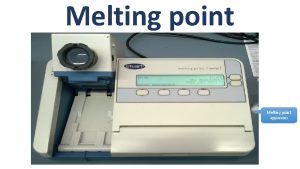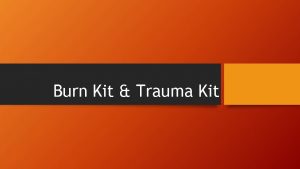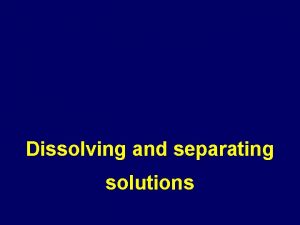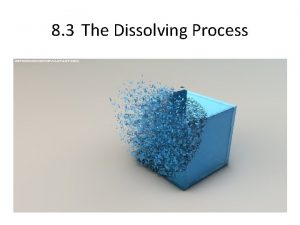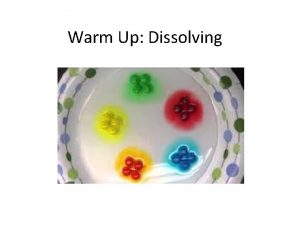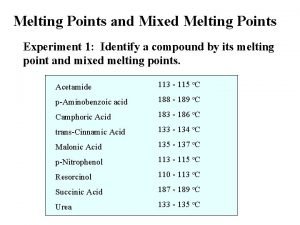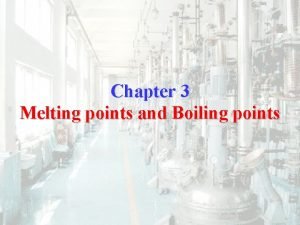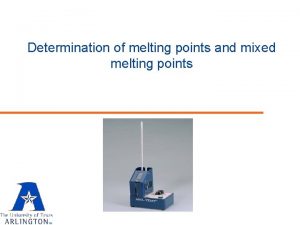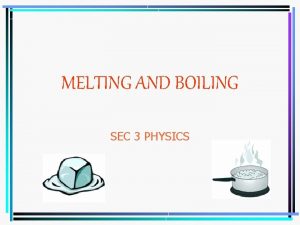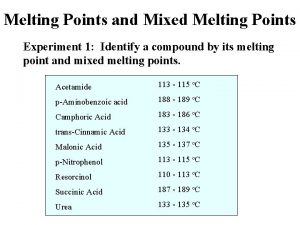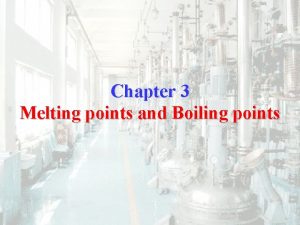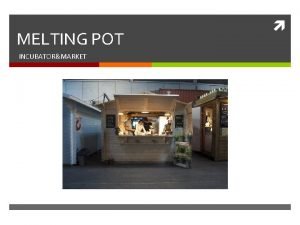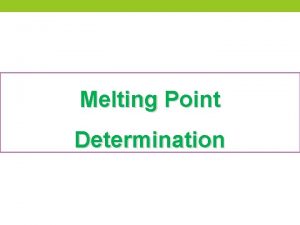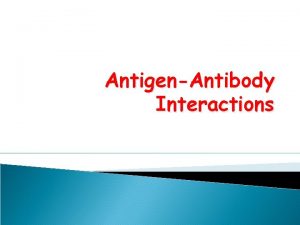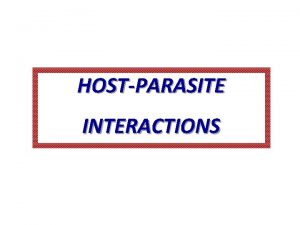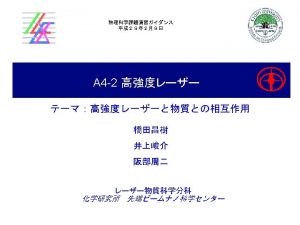Melting and Dissolving FOSS Kit Chemical Interactions 8






























































- Slides: 62

Melting and Dissolving FOSS Kit: Chemical Interactions 8 th Grade

§ Sometimes solids turn into liquids. § How does that happen? § Some say dissolving and some say melting. That’s confusing.

Write this down in notebook What is dissolving and what makes it happen? What is melting and what makes it happen?

How are melting and dissolving alike? Different? How would you melt a substance? How would you dissolve a substance?






§ Answer in notebook § What happens to the colored coating in water? § What is under the colored coating? § What happens to the chocolate in the center? § What happens to the candies that are not in water?

Dissolving is when a solid substance is placed in water, or another liquid, and particles of the solid substance break away and move into the liquid.

Dissolving The liquid with the substance dissolved in it is a solution. • A solution of a substance is made of particles of that substance mixed uniformly with particles of the liquid in which it is dissolved.

Melting § When a substance melts, it changes from a solid to a liquid. § Melted particles do not change the composition of the substance.

Melting Heat is used to change a solid to a liquid. • Heat changes the kinetic energy of the particles of the substance. • When particles have a sufficient level of kinetic energy, the particles start to move over and past one another as liquid.

§ Did the candies dissolve or melt? § What was needed for the colored coating to dissolve? § What was needed for the chocolate to melt? § When the colored coating dissolved where did it go?

§ What happed to the colored coating at the particle level when it dissolved? § What was between the particles of colored coating after it dissolved? § When the chocolate melted, where did it go?

§ What was between the particles of chocolate after it melted? § What happed to the chocolate at the particle level as the chocolate melted? § What caused the colored coating of the candies in the foil cup over hot water to crack?

§ Think about the two ways the candies changed in the previous experiment. § Most matter exists on earth in one of three common phases or states of matter, solid, liquid or gas.

§ We are going to focus on melting today. I have three materials, margarine, wax and sugar. § What could you do to find out if these materials melt in hot water?

These are the materials for our lab



§ Which materials melted in the hot water? § What was the temperature of the water? § What was the melting temperature of the margarine? § What was the melting temperature of the wax? Sugar? § At what temperature does margarine melt? How can you find out?

§ At the start of the experiment, what state of matter was the margarine? § At the end of the experiment? § If you could see the particles of margarine, what would be happening to them as the margarine melts? § What would happen to the particles if melted margarine were put in cold water?

§ If you could see the particles of wax, what would be happening to them in the hot water? § If you could see the particles of sugar, what would be happening to them in the hot water?

Part 3 § Margarine melted- it turned into liquid, Wax got soft, but didn’t really melt into liquid. Sugar didn’t seem to change much at all. § Do you think wax and sugar can melt?

§ What would you do to find out if wax and sugar can melt? § We can use candles to heat wax and sugar. We will need to be careful when working with the flames. The temperature of the flame is very hot – about 14000 C

§ In a candle flame a quarter of the energy created, is released as heat, which radiates in many directions. Only the 4% of the candle's heat goes into melting wax. There are three main reaction zones in a candle. The part where combustion starts is called the primary reaction zone. In the main reaction zone, the process of burning ends. The luminous zone is where the free carbon burns and releases light. The burning of a candle flame is a very complicated process. Liquid wax is drawn up the wick by capillary motion and vaporized with oxygen. The remaining carbon dioxide and water form many kinds of complex carbon-rich particles called soot. Soot is raised up to the top of the flame where the very strong temperature burns it. § Color tells us about the temperature of a candle flame. The outer core of the candle flame is light blue -- 1670 K (1400 °C). That is the hottest part of the flame. The color inside the flame becomes yellow, orange and finally red. The further you reach to the center of the flame, the lower the temperature will be. The red portion is around 1070 K (800 °C). § http: //hypertextbook. com/facts/1999/Jane. Fishler. shtml



1 You might try salt, but not for too long Make a Data Table of How long it takes to melt



§ Melting is the change of state from solid to liquid. Freezing is a change of state from liquid to solid. Change of state is the result of change of the kinetic energy of the particles of the material. Nothing changes during the change of state except the motion of the particles. The particles do not melt, freeze, contract, expand or change into another type of particle.

§ Change of state is not a chemical reaction, so no new products are 0 formed. Water freezes at 0 C. Iron 0 freezes at 1538 C. That’s very hot. The alcohol in a thermometer freezes 0 at -98 C. That’s really cold. Substances freeze at their own temperature.

§ Read the article Rock Solid answer questions at the end of the chapter.

§ 1. What causes a substance to change from one phase to another? § 2. What are three important things to know about freezing and melting? § 3. Why does liquid water form on the bottom of a cup of ice placed over warm water? § 4. What happens to water particles as a cup of ice melts and then evaporates?

Part 4 § Today we will freeze some water. § How can we do that?

Water in Ice § What is the temperature of the water in the vial? § Water freezes at 0 C. Is the water frozen? § Is it freezing? § Will it freeze in a while? § What do we need to do to get the water to freeze?






Conclusions page 71 § 1. Describe what happened to the ice/salt mixture as the investigation progressed. § 2. Describe what happened to the vial of water as the investigation progressed. § 3. What happened to the temperature of the water in the vial as the water was freezing? § 4. Why do you think a vial of water in plain ice wouldn’t freeze, but the vial of water in salted ice did freeze? § 5. People put salt on ice when they make ice cream. Why do they do that?


Part 5 § What phase changes did you observe in the last activity with sugar and wax? § What can you do to get a solid material to melt? § What happens to the solid material at the particle level when it melts?

Turn into gas § Remember the particles in gas travel in straight lines through space as individuals. The average distance between them is relatively large. § When the particles of a substance have enough kinetic energy to break away and fly into space, the material substance changes into the gas phase.

Water Vapor § If water boils and turns into gas, where does it go? § What is water gas called? § What does water vapor look like? § When water turns into water vapor, a gas, is it still water or something else? § How can you tell if water vapor is present?

§ If water in its gas state is invisible, what can we do to find if water vapor is present? § Draw the next experiment in your notebook and label everything.


Experiment set up Hot water in bottom cup Ice in smaller top cup

Where does the dew come from? § You can see the steam, fog and dew on the cup. What are they composed of? § Where did the liquid water come from? § What happened at the particle level to cause the change of state from gas to liquid?

§ Condensation is the process of changing state from gas to a liquid. § Evaporation is changing state from liquid to gas

Answer in notebook § Water condensed on the ice cup. Where did that water come from? § Why did the liquid water condense on the bottom of the cup? § We observed a phase change from gas to liquid in the hot water and ice system. How could we create another phase change in the system from liquid to solid?

Add salt to the system § Use a stirring stick and carefully stir the salt into the ice. § Leave it still for several minutes. § Carefully lift the ice cup and observe the bottom. § Write down your observations into your notebook and draw the two cups.


Add to notebook § What will happen when all the ice melts? § How would dry ice change this lab? § Would you have more frozen water vapor or less?

Quiz Warm-up Answer in notebook

Section 7 Review § § § § Vocabulary Dissolving Melting Evaporate Freeze Condense Freezing point – melting point Equilibrium


 Foss chemical interactions
Foss chemical interactions Congruent and incongruent melting
Congruent and incongruent melting Is dissolving salt in water chemical or physical change
Is dissolving salt in water chemical or physical change Egg physical change
Egg physical change Physical properties
Physical properties Attatchment theory
Attatchment theory Shannon foss
Shannon foss Foss programfag
Foss programfag Combifoss
Combifoss Diana foss
Diana foss Hanne foss hansen
Hanne foss hansen Nltk korean
Nltk korean Combifoss
Combifoss Anna foss
Anna foss Physical change of bread
Physical change of bread Mending a broken bone physical or chemical change
Mending a broken bone physical or chemical change Is separating sand from gravel a physical change
Is separating sand from gravel a physical change Physical changes of matter
Physical changes of matter Mixing and dissolving
Mixing and dissolving Particle theory of matter grade 7
Particle theory of matter grade 7 Accounting information system chapter 1
Accounting information system chapter 1 Alkyne to alkene
Alkyne to alkene Volume of a golf ball
Volume of a golf ball Salt vs sugar dissolving in water
Salt vs sugar dissolving in water The dissolving medium
The dissolving medium Factors that affect dissolving
Factors that affect dissolving Milady esthetics chapter 22 review questions
Milady esthetics chapter 22 review questions A solution is formed by dissolving 45 grams
A solution is formed by dissolving 45 grams Types of reactions
Types of reactions Chapter 7 review chemical formulas and chemical compounds
Chapter 7 review chemical formulas and chemical compounds 7-3 practice problems chemistry answers
7-3 practice problems chemistry answers To understand and interpret social interactions
To understand and interpret social interactions Contractionary fiscal policy interest rate
Contractionary fiscal policy interest rate Properties and interactions of magnets
Properties and interactions of magnets Earth sphere interactions
Earth sphere interactions Chapter 6 lesson 1 habitats niches and species interactions
Chapter 6 lesson 1 habitats niches and species interactions Product architecture example
Product architecture example 5 factors of communication
5 factors of communication Symbiosis and species interactions keystone webquest
Symbiosis and species interactions keystone webquest Naive bayes pays attention to complex interactions and
Naive bayes pays attention to complex interactions and Fundamental and incidental interactions
Fundamental and incidental interactions Niches and community interactions
Niches and community interactions Regional and transregional interactions
Regional and transregional interactions Neutrinous
Neutrinous Regional and transregional interactions
Regional and transregional interactions Section 2 classifying chemical reactions worksheet answers
Section 2 classifying chemical reactions worksheet answers Chemical reactions section 2 classifying chemical reactions
Chemical reactions section 2 classifying chemical reactions Chemical reactions section 1 chemical changes
Chemical reactions section 1 chemical changes Chapter 18 chemical reactions balancing chemical equations
Chapter 18 chemical reactions balancing chemical equations Noncovalent interactions
Noncovalent interactions Congress formal and informal powers
Congress formal and informal powers Types of species interactions
Types of species interactions Example of commensalism
Example of commensalism Sertraline interactions
Sertraline interactions Felodapine
Felodapine Interactions in the environment grade 7
Interactions in the environment grade 7 Branch of biology dealing with interactions among organisms
Branch of biology dealing with interactions among organisms Section 20-1 review species interactions
Section 20-1 review species interactions Plant system interactions worksheet answers
Plant system interactions worksheet answers Moa of h2 antagonist
Moa of h2 antagonist Types of interactions
Types of interactions Circulatory system interactions with other systems
Circulatory system interactions with other systems Diaxial interactions
Diaxial interactions
